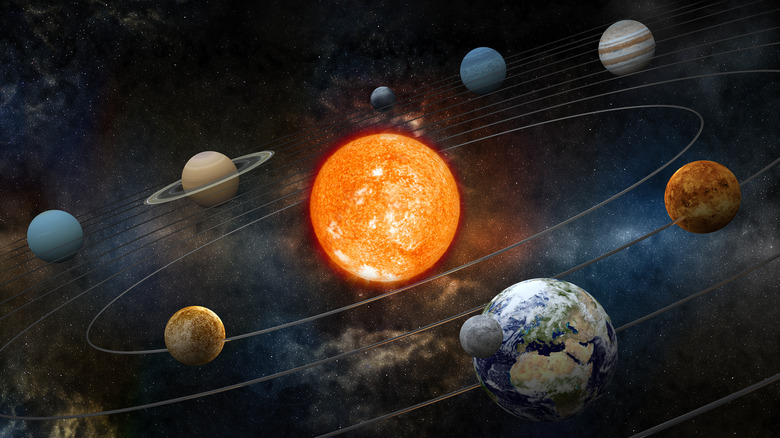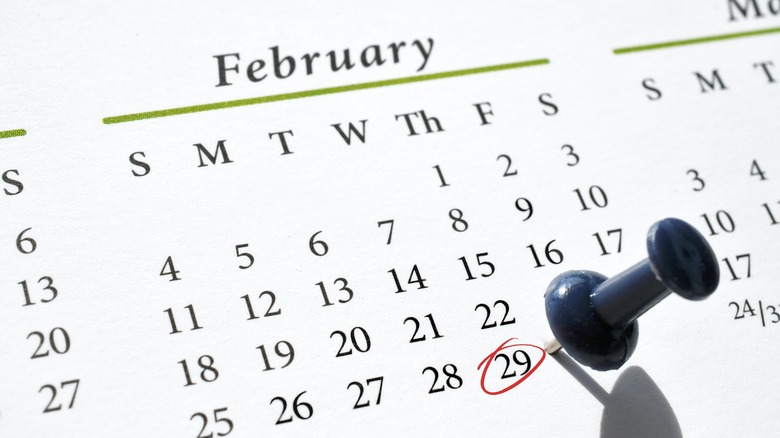The Science Behind Leap Years, Why They Exist, And When Is The Next One
Time, as humanity understands it, is an illusion. While it's common knowledge that a day lasts 24 hours and a year lasts 365 days, that's actually more of a ballpark estimate than an absolute fact. In the latter case, it's because a year isn't actually 365 days on the dot that we occasionally need to futz with the global calendar a bit in order to preserve our seasonal structure. It's for this reason that the concept of leap years exists.
While leap years can make the calendar a bit weird for a while, they're actually a vital tool for ensuring that time continues to flow as we all understand it. In fact, without leap years, the entire calendar system would eventually be thrown completely out of whack, and the months and seasons would lose all meaning. It sounds like some kind of obtuse time travel concept, but it's actually fairly simple if you take a look at the science.
Why do we have leap years?
The reason there are 365 days in a year is because that's how long it takes for the Earth to make a complete orbit around the sun. In actuality, though, that number is the result of downward rounding; it actually takes slightly more than 365 days to complete that revolution. For the most part, that difference is negligible, but as the years pass, that little bit of unaccounted time gradually starts to add up until it eventually reaches an entire day. A single unaccounted-for day doesn't sound like a big deal, but if we left that day alone for a few hundred years, it would gradually nudge our calendars out of alignment with the actual seasons. Eventually, we would be experiencing summer weather during the December holidays.
To prevent this long-scale annoyance from occurring, we use leap years, in which an extra day is added to the month of February every four years. By properly accounting for that extraneous day once it adds up, the rest of the calendar stays in perfect alignment (at least until the time adds up again).
When is the next leap year?
Leap years are added to the calendar every four years, which is why 2024 is a leap year. The next few leap years will occur in 2028, 2032, 2036, 2040, and 2044. It is worth noting, however, that a leap year isn't always held at four-year intervals. Leap years are occasionally skipped for a similar reason to why they're employed in the first place: the consolidation of time.
Much like how a year isn't exactly 365 days, a day isn't exactly 24 hours – it's actually a little bit less due to variations in the speed of the Earth's rotation. By adding a day, we actually increase the total time of a year by nearly an hour. Again, this isn't noteworthy on the small scale, but if we don't account for that extra time, the calendar will get messed up in the future. The determining rule is that if a particular year is divisible by 100, but not divisible by 400, you skip the leap year. The next time we'll skip a leap year will be in the year 2100.


